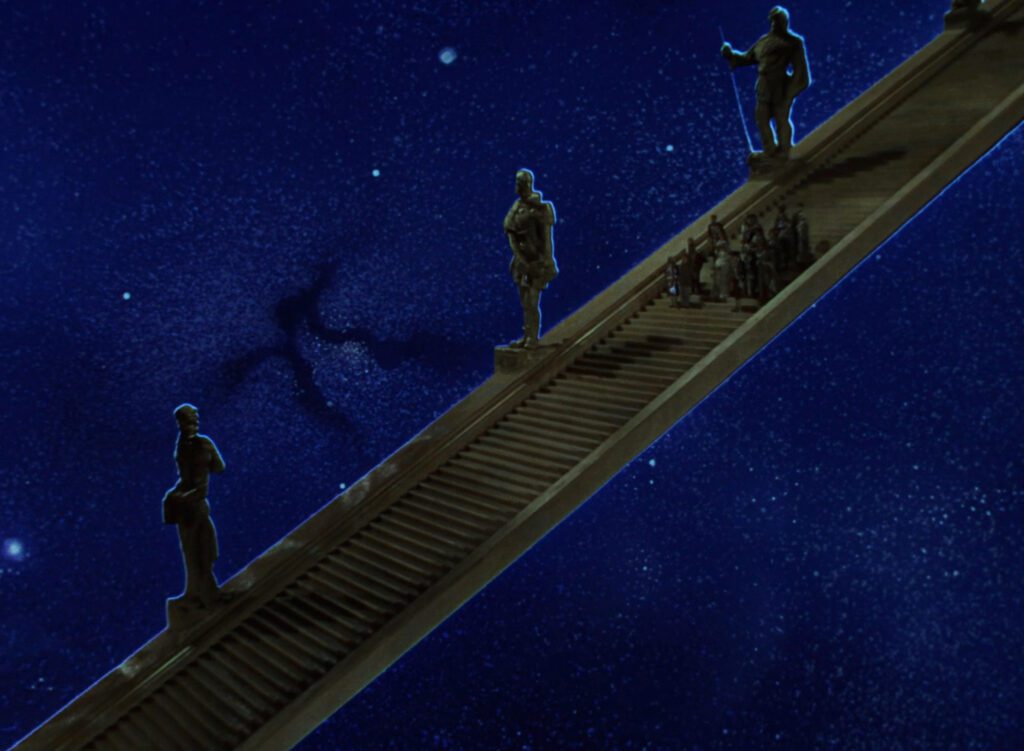
A Matter of Life and Death
1946, directed by Michael Powell & Emeric Pressburger
It’s ironic that the Grim Reaper’s equivalent in A Matter of Life and Death, Conductor 71, is such a bon vivant, a lover of life. The amorous Frenchman lands on Earth among the azaleas and remarks, “One is starved for Technicolor up there.” The film is not entirely comical, but it never strays too far from this light tone. Even when Dr. Reeves dies in a motorcycle crash, it’s more of a plot convenience than a tragedy. It might not occur to viewers, therefore, to take the title with all due seriousness. It’s a fitting title – the plot revolves around life and death – but not apparently a necessary title. The film was released in the United States as Stairway to Heaven, which is also fitting in its way. Nevertheless, if we take the view that does the most credit to the film, we must admit a double meaning in the original title. It refers not only to the plot but also to the subject. We must restore the title’s full urgency… what the film has to say is in fact a matter of life and death.
In the aftermath of World War II it was a tall order to impress audiences with the urgency of current affairs. The British had lived on the edge of terror for six years, and the rare horror film from the period, Dead of Night, was more therapeutic than shocking. It’s not that the audience was frivolous; on the contrary, history had given them an overdose of seriousness. Any serious message had to be wrapped in a cloak of entertainment, which is exactly what Powell and Pressburger’s movie does.
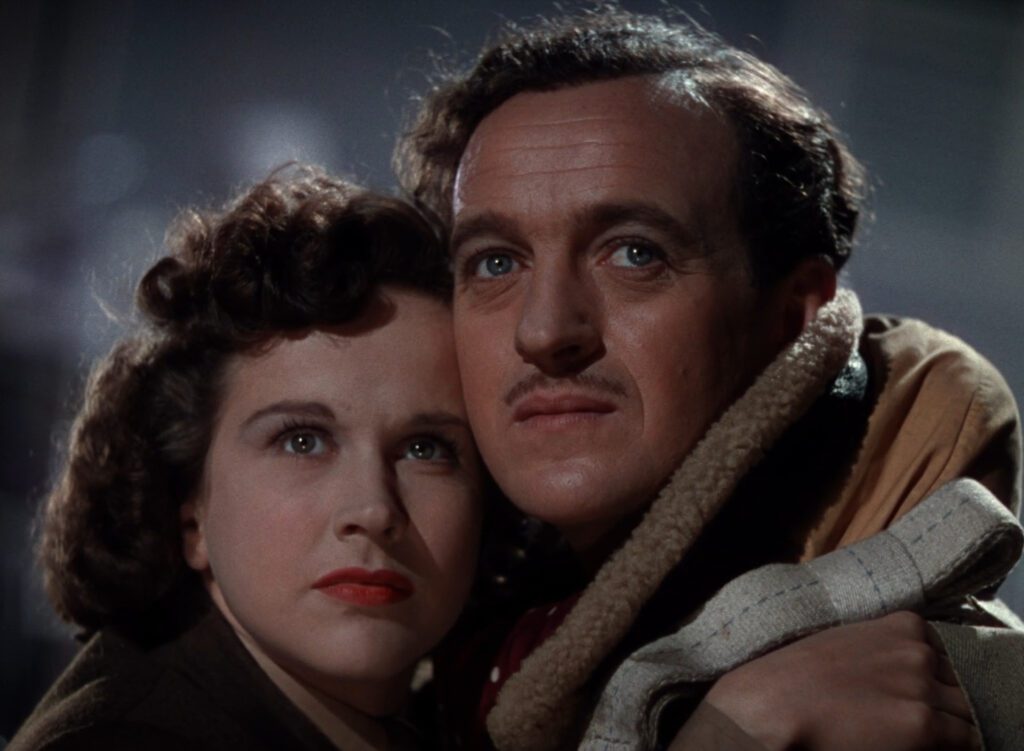
Still, if we look for gravity in A Matter of Life and Death, we’re likely to come up short. If its object were to comfort families still mourning a lost soldier, sailor, or airman, then the story probably would not have ended with Peter’s reprieve. What’s especially strange is how it reawakens the animosity, already laid to rest for well over a century, between Britain and the United States. In order for Peter to remain alive beside June, his celestial counsel Dr. Reeves must relitigate forgotten grievances from the American Revolution against a fiery Massachusetts schoolteacher killed by a British bullet in 1775. Certainly during the more recent war there had been tensions with Yanks stationed in England, and the British in 1946 had to adjust to American supremacy and their own empire’s decline… but the two countries still enjoyed warm relations, and no present rivalry could explain the presumed urgency in the film’s title.
It would be better, instead, to think of this oddly resuscitated Anglo-American feud as a metaphor for more divisive rifts threatening the post-war world. The film makes a continual fuss over national differences, not only in the trial’s arguments but in the trans-Atlantic romance, the light-hearted banter about France vs. England (including the reported smell of fried onions), and in the surprisingly progressive discussion of the jury’s diversity. Wherever the topic comes up, the movie always promotes good international relations. The American prosecutor becomes sympathetic at the end, and the film asserts modern Britain’s adherence to American egalitarian values, both in the trial and when the American captain asks for officers’ quarters only to learn that everyone is treated equally in the afterworld. The trial introduces Russians, Chinese, Indians, African-Americans, and Irish, promoting an ideal of inclusivity that puts past and potential conflicts in a softer light. The film pointedly omits Germans, Japanese, or Italians, all of whose recent aggressions were too fresh a memory.
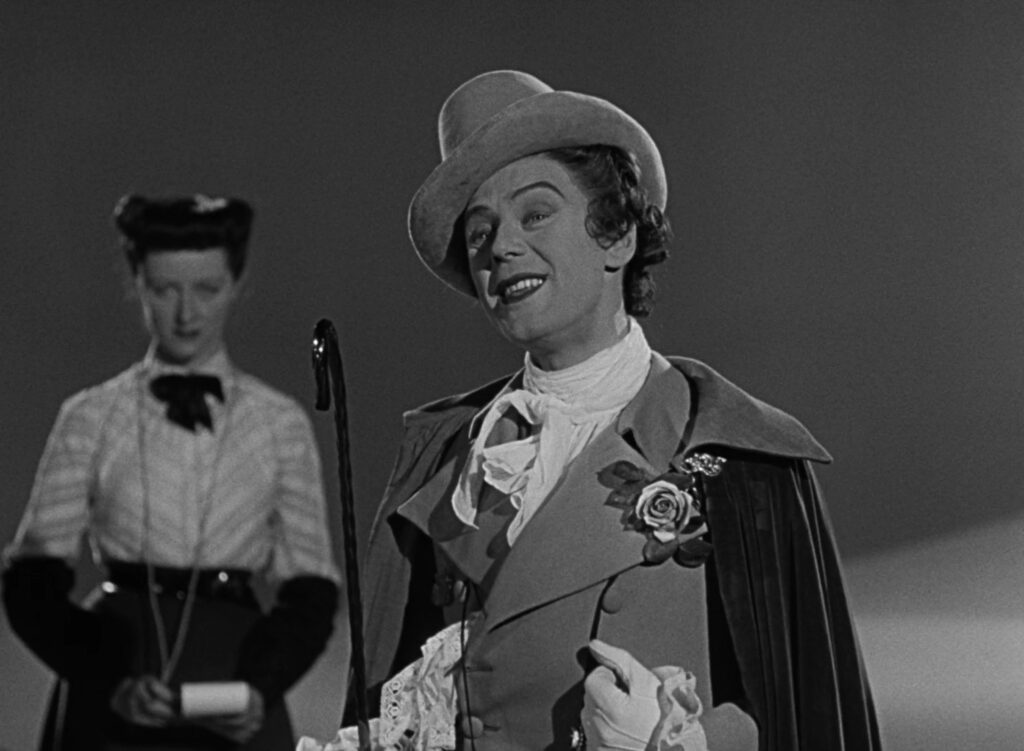
The opening puts all of this in perspective. First, during the animated survey of the universe, the narrator calls our attention to a nova. “A whole solar system exploded. Someone must have been messing about with the uranium atom.” If we’re willing to watch the rest of the film as a gentle but urgent piece of guidance for a dawning nuclear age – as this seemingly offhand line about the nova suggests – then everything in it makes more sense. The tour of outer space then arrives at a view of our home planet: “And here’s the Earth, our Earth, moving around in its place, part of the pattern, part of the universe. Reassuring, isn’t it?” – as if there were some doubt as to how reassuring it really was.
Before the plot begins, we get a brief recap of events from the war, all with a possible double meaning. It’s May 1945, and Berlin is burning. The map of Europe punctured by fire evokes some of the horror of a nuclear attack, as does the fog bank rolling over the continent like a mushroom cloud. We find the protagonist Peter flying a bomber plane, the window behind him filled with flames, and June speaks to him from a signal station lit in a hellish shade of red. From here on there are no further suggestions of nuclear warfare, which is just as well. The film’s argument doesn’t need overkill. Either we get the stakes or we don’t – what’s important is that we appreciate the story’s vision of peace, its faith that we can put international differences in a perspective broad enough to make them dissolve. We’re reminded how much hatred there had once been between Britain and America, or between England and France, yet we know how little those differences matter now.
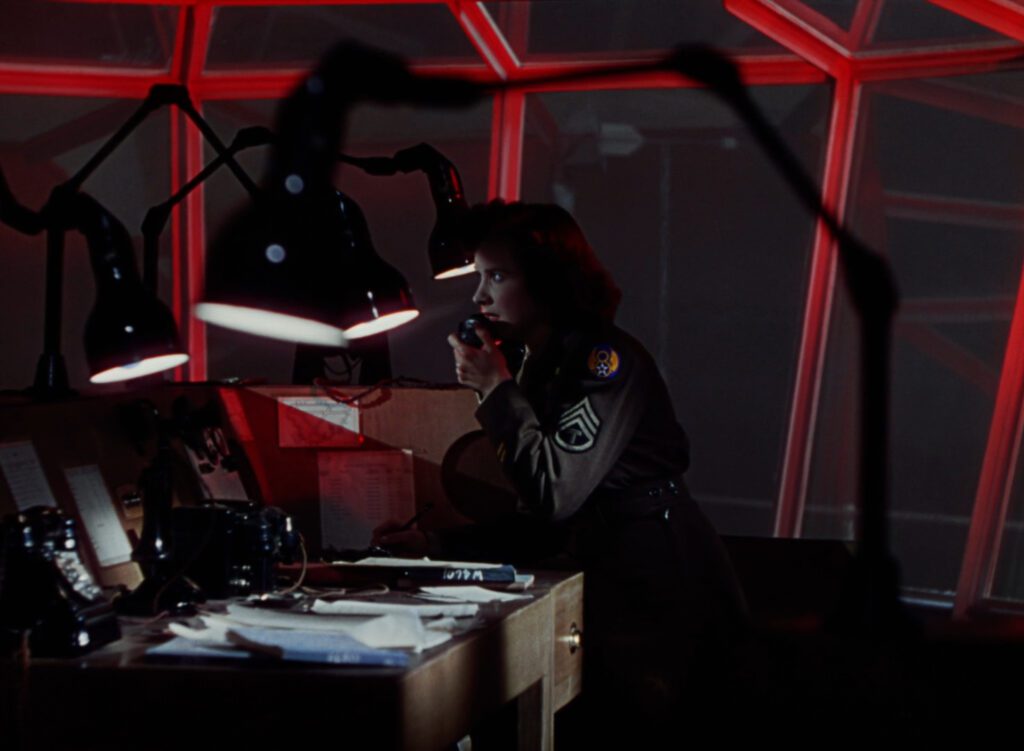
The titles describe the film as “a story of two worlds”, taking pains to clarify that one of them “exists only in the mind of a young airman whose life & imagination have been violently shaped by war.” Though a few newly arrived souls compare the afterlife to their ideas of heaven, the film insists that it does not intend to portray heaven itself. This is not only to placate religious sensibilities. It’s important, both for the plot and for the film’s purpose, that the upper world should not be more desirable than the earthly world where Peter and June wish to live out their relationship. Without making the upper world unpleasant, the film nonetheless marks it as a site of contention – of arguments among celestial bureaucrats, then of a courtroom trial. If it springs from a mind “shaped by war” then it’s fitting that it’s a place of opposition, colored in black and white.
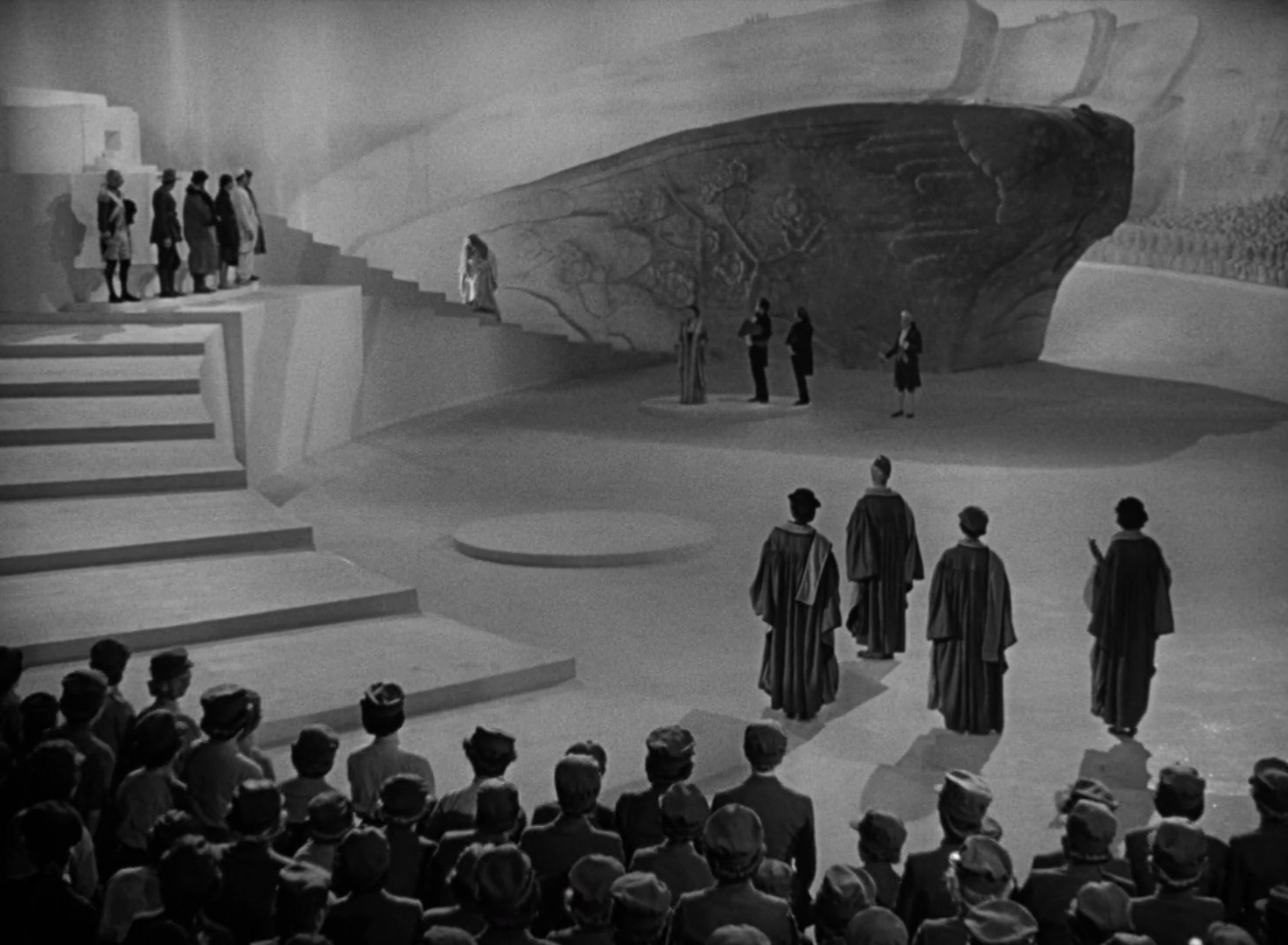
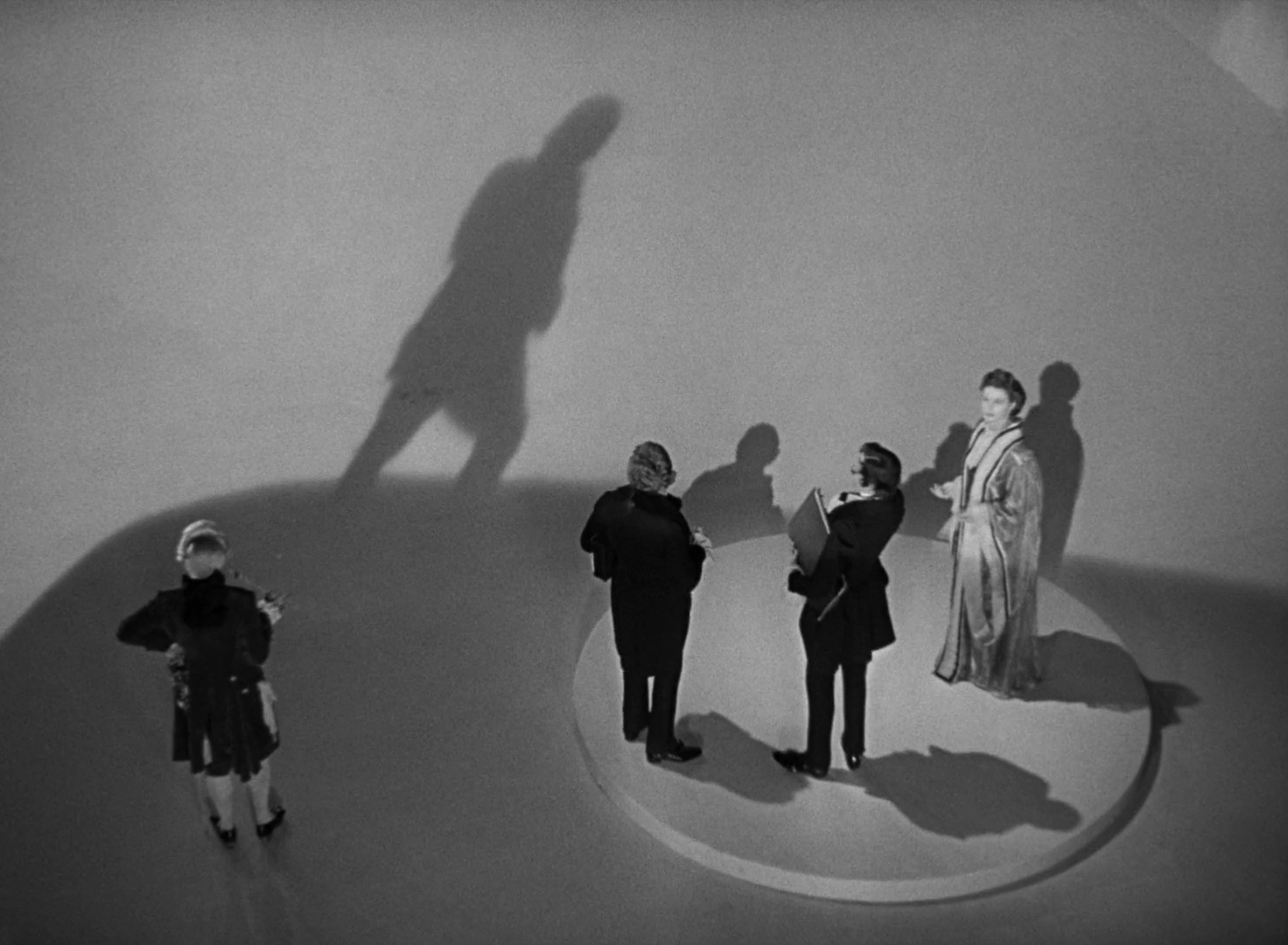
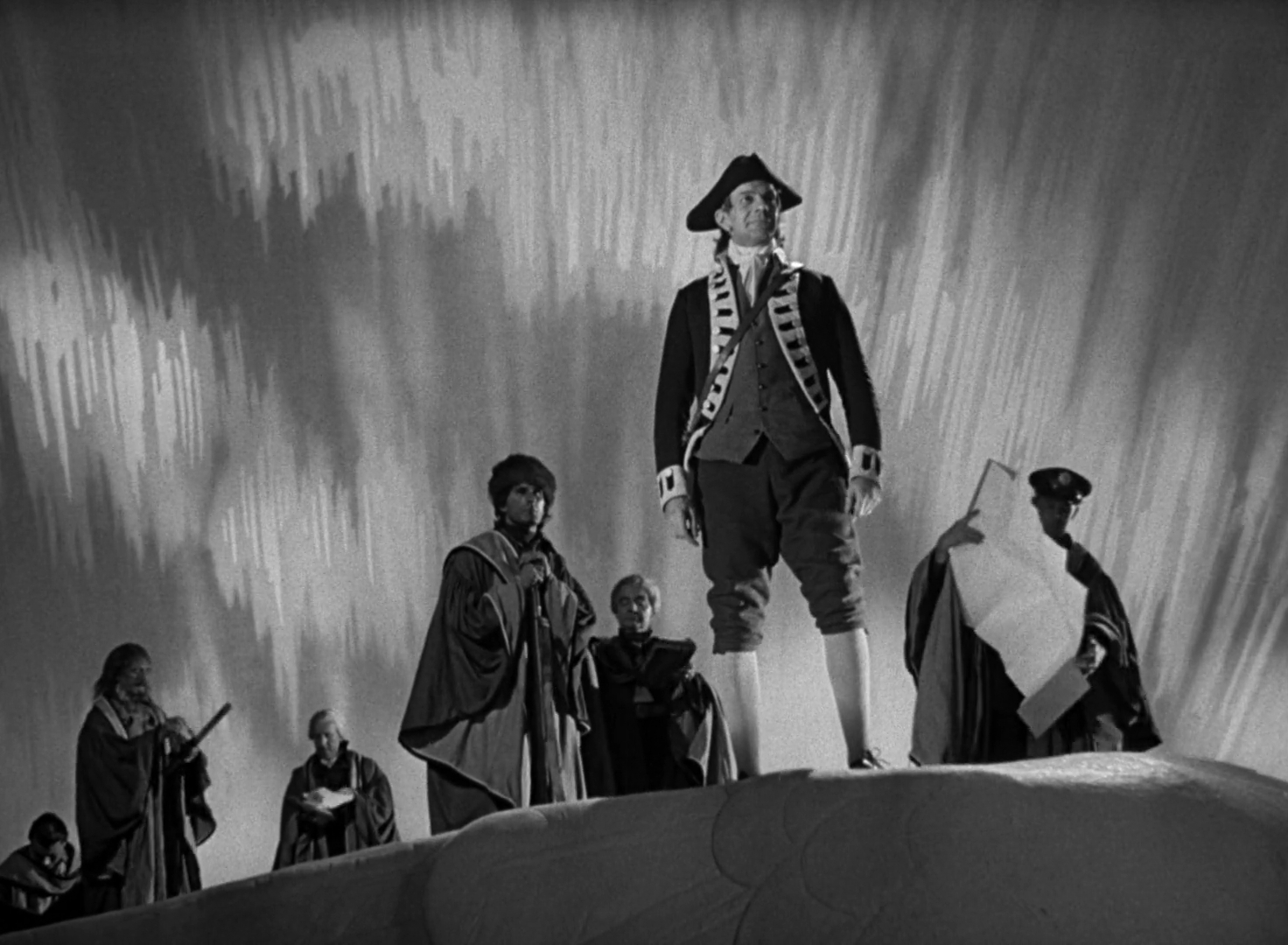
As Conductor 71 reminds us so drolly in his line about Technicolor, the Earth is not a black and white world, at least not unless we choose to make it so. There is one scene on Earth however that mirrors Peter’s vision of the afterlife. In the clubhouse where he first meets Dr. Reeves there’s a rehearsal for A Midsummer Night’s Dream, complete with fairy wings like the angelic wings handed out in the other world. A piano plays the ominous theme for the moving staircase, and a wide staircase dominates the background. Like the upper world, the clubroom is a place of opposites – the black and white piano and chessboard, the treads and risers of the steps, the contrast between British and American acting styles, the dialogue about brothers and sisters, winning and losing, eating and drinking, living and dead, thinking too little and too much. Ironically though, when the doctor tests Peter’s vision, he sees in his right and left periphery the two things that don’t belong in the upper world – fire and color.
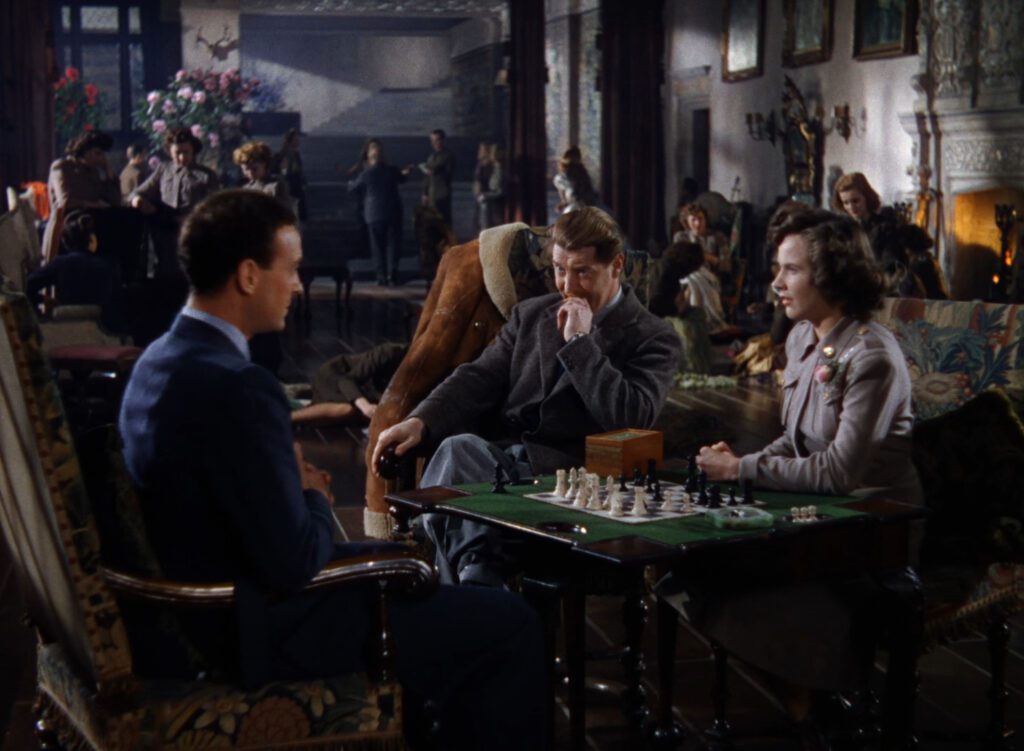
The real world – in contrast to the imagined afterlife, and in contrast to the false lens of prejudice that divides nations and peoples – is a place of ambiguity, where nothing can be reduced to opposites. Even love cannot be proved within the confines of life. As Peter and June both understand, it can only be proved by dying, yet they both prefer to live. A double ambiguity underscores the whole plot, so that we can be certain neither of Peter’s existence on Earth nor of his vision of the afterlife. The latter borrows from the living world (the rose lapel, the piano and staircase, the same actor playing the judge and surgeon), as if it’s all a dream (as the opening text indicates). On the other hand we’re left with the great unanswered question of how Peter survived his fall, and the film frequently hints that he could be a ghost. He tells June from his airplane that he’ll come to haunt her at Lee Wood House. The first creature who notices him at the beach is a dog (animals being reputed to sense ghosts); a sign warns him to keep out (as if he’s trespassing in the world of the living); and June is initially frightened to see him. Later Peter knows Frank is dead without being told.
If real life is so ambiguous, then it makes no sense to draw sharp distinctions between people along lines of nationality, race, creed, etc. All of those distinctions obscure our vision of each other, like the interstellar dust in the prologue that impedes our view of the universe. In the heavenly trial Dr. Reeves rests his case: “Here in this tear are love and truth and friendship. Those qualities and those qualities alone can build a new world today and must build a better one tomorrow.”
CONNECTIONS:
Casablanca – Plot preceded by a spinning Earth and a map of events in World War II
Black Narcissus – Gentle push for peaceful adjustment to a new post-war world order
The Ghost and Mrs. Muir – Ambiguity regarding a character’s presence in the world of the living
The Third Man – Plea to avert a new round of world war after the end of World War II
Orphée – Contest between a poet and dead spirits for a couple’s continued life on Earth
Alphaville – Argument that world peace requires an end to oppositional thinking
No Bears – Seemingly offhand line alludes to a current global threat (nuclear war or climate change), putting the film’s argument in context; ambiguity as a token of life